#Fracked gas icon
Explore tagged Tumblr posts
Text
Documentary on Greens icon Bob Brown comes to streaming
New Post has been published on https://qnews.com.au/documentary-on-greens-icon-bob-brown-comes-to-streaming/
Documentary on Greens icon Bob Brown comes to streaming
Australian documentary The Giants, centering on longtime climate activist, gay trailblazer and former Greens party leader Bob Brown, is streaming on Netflix.
Bob Brown was the first openly gay member of the Australian Parliament as well as the first openly gay leader of an Australian political party.
For 50 years, he’s also been a pivotal figure in environmental and human rights activism in Australia.
In 1983, Bob Brown joined blockade protests against the damming of Tasmania’s Franklin River. Police ultimately arrested 1500 people and jailed 600.
Bob was one of them, and spent nineteen days inside Risdon Prison. But a day after his release, he entered the Tasmanian state Parliament as the first Greens MP.
In 1996, he entered the federal Senate, taking his fight for conservation, climate action and human rights to Canberra.
Bob has also campaigned for First Nations rights, LGBTQIA+ rights, refugee rights, and more.
Along the way, he’s been imprisoned, assaulted, threatened, and shot at.
The Giants, from filmmakers Laurence Billiet and Rachel Antony, is a dual portrait of the plight of Tasmania’s rainforests and Bob Brown’s lifelong activism to preserve them.
View this post on Instagram
A post shared by The Giants Film (@thegiantsfilm)
‘Become active, instead of being depressed’
Bob Brown left politics in 2012, but his activism has continued.
The Bob Brown Foundation’s motto is “Don’t get depressed, get active,” and Bob hopes the new documentary inspires the next generation.
“I hope it gives people a cause to get active about our planet,” he said of the film last year.
He warned “instead of putting our foot on the brake,” state and federal political leaders are still “putting their foot on the accelerator of environmental destruction.”
“You just can’t be, in this world, licensing more coal mines, gas fracking, logging [and] burning of forests, [putting] massive tonnages of carbon into the atmosphere and destroying species,” he said.
“They’re adding to the burden of global warming which our kids are going to have to look after.
“If only this film can inspire one or two young people to become active instead of being depressed, it will be worthwhile.
“There’s a new mood in the air of defiance and rebellion and ‘we’re not going to put up with this’… I find it inspiring.”
Image: Supplied
Bob Brown’s tribute to partner Paul
In the film, Bob Brown also opens up about his personal life. He said he credits a lot to his longtime partner Paul Thomas, whom he met in the 1980s.
“I know myself well enough to know that having such a marvellous companion is everything to me in where I am in life now,” he said.
“I would not have made it without him. He’s just my great fortune in life. I had great parents but meeting Paul when I did has been everything.
“Without him, I wouldn’t be doing what I am doing.”
The Giants is streaming in Australia and New Zealand on Netflix now.
youtube
For the latest LGBTIQA+ Sister Girl and Brother Boy news, entertainment, community stories in Australia, visit qnews.com.au. Check out our latest magazines or find us on Facebook, Twitter, Instagram and YouTube.
0 notes
Text
Fracked gas icon

"I don't think OPEC has to worry that much more about US shale growth long term," he said, adding that the firm "will be more cautious" through 2025. Shareholders pushed companies to prioritize steady profits over the rapid growth seen in prior years.ĭrilling in the oil-rich Permian Basin "is going to slow down significantly over the next several years," Scott Sheffield, the CEO of the energy producer Pioneer Natural Resources, told investors in November 2019. Industry giants told investors in 2019 they were considering shrinking production. Near the end of the 2010s, companies started to show signs of a pullback as investment slowed. The previous decade's fracking boom quickly turned into a sprint, with companies prioritizing all-out growth over profitability. How fracking powered the energy industry's biggest party - and a nasty hangover Throw the pandemic, cratered demand, and market dynamics into the mix, and fracking quickly morphed into an anchor holding US production down at a time of intense need. Yet the production surge flashed its first signs of a slowdown in 2019. The US fracking boom dragged energy prices lower for much of the 2010s as supply overtook demand. The rising prices are in sharp contrast to the declines seen throughout the past decade. Prices are even higher in the most populous states, with Californians forced to pay an average $6.39 a gallon. The average price per gallon of gasoline in the US hit a record $4.95 on Wednesday, according to AAA data. Relief measures, including emergency releases, dented the rally slightly through April, but with Americans' demand holding strong, prices quickly rebounded.

1 note
·
View note
Link
This is a long post, but I want to post something positive (hope for the future) instead of all the negative crap I’ve posted because.......negative crap surrounded us for 4+ years.

While the US Fish and Wildlife Service acknowledges that the iconic monarch butterfly, a major pollinator, should be designated as a threatened species, it has declined to do so, saying it has to focus limited resources on higher-priority species. Noah Greenwald, director of the endangered species program at the Center for Biological Diversity, however, is hopeful the monarch can gain necessary protection under Biden. Wikimedia Commons/Via Center for Biological Diversity.
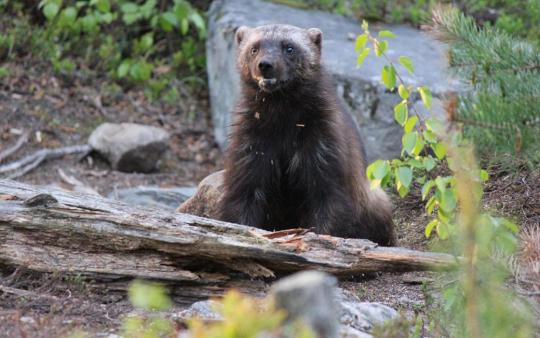
The photogenic, badger-like American wolverine, known for its round ears and thick fur, is known to patrol up to 500 square miles of snowy territory in a relentless quest for its next meal, scaling mountains in minutes. Wolverines’ historic ranges include northern Eurasia and North America; however, government-sponsored eradication programs and habitat loss in the early 1900s nearly eliminated the animal from the Lower 48. Beginning in the 1960s, they started making their way back to Washington, Idaho, Montana, and Wyoming. Now, an estimated 250 to 300 wolverines roam south of Canada—a stable population, though likely less than half the carrying capacity, or the number the environment can support. The species—which plays an important role in the ecosystem as predators that keep prey animal populations in check, furthering biodiversity—faces a range of threats, from loss of habitat to roads and other development, resource extraction, recreation, and, especially, climate change. Wolverines rely on deep snowpack lasting into May—a condition that, of course, will diminish as the planet warms. As far as climate-change-induced extinction goes, Greenwald describes the wolverine is a “real canary in the coal mine.” He adds, “We’re in court working to overturn the Trump admin’s refusal to grant them protections. If not, it’ll come down to the courts." Nigel Hoult/Via Center for Biological Diversity.
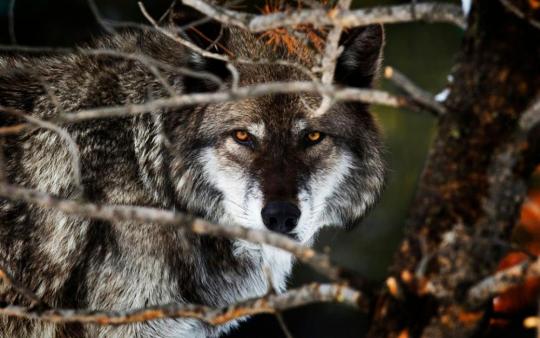
In October, the Trump administration finalized a controversial rule that removes ESA protections for all gray wolves in the lower 48 states, excepting Mexican gray wolves in Arizona and New Mexico. The move, long in the making, turns over management of this imperiled species to states and tribal governments. “We’re going to court, and we’re hopeful that both gray wolves and Mexican gray wolves will be able to expand further into their range in the southwest,” Greenwald reports. “We’re in the process with USFW of developing a new management and recovery plan for reintroduced species, and we’re hopeful it’ll be much easier to work with Biden’s [as yet unannounced] new head of agency. The current director used to work for Monsanto.” doublejwebers/flickr/via Center for Biological Diversity.
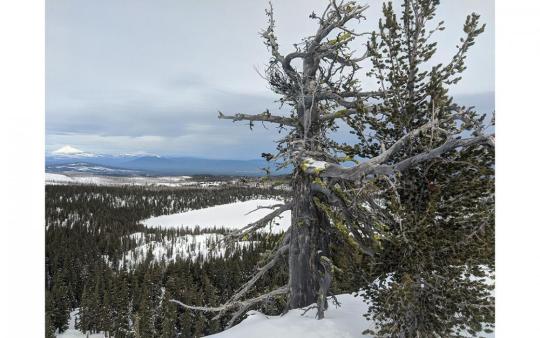
Yes, the ESA protects plants too! Advocates are proposing that the whitebark pine gain threatened status this year, due to its struggle under introduced disease and climate change. Noah Greenwald/Center for Biological Diversity.

The lesser prairie chicken, which calls the southern plains states of Kansas, Oklahoma, and Texas home, has lost much habitat in recent years to agriculture and oil and gas development. (Its habitat overlays the Permian Basin, which has seen more oil and gas development in the past decade than anywhere else in the world.) They also don’t do well with the addition of utility poles in their stomping grounds, as they double as perches for predators. “We petitioned to add lesser prairie chickens to the endangered list in the late 1990s, and while they got put on the candidate list, during that delay is when the fracking boom started, so threats to its survival only increased,” Greenwald shares. “Eventually, it got listed as threatened, with a somewhat unfortunate conservation agreement that would let the oil and gas industry off the hook, but we’re challenging that decision in April, and we’re optimistic that the Biden administration will list them as endangered, or at least threatened.” USFWS/Via Center for Biological Diversity.
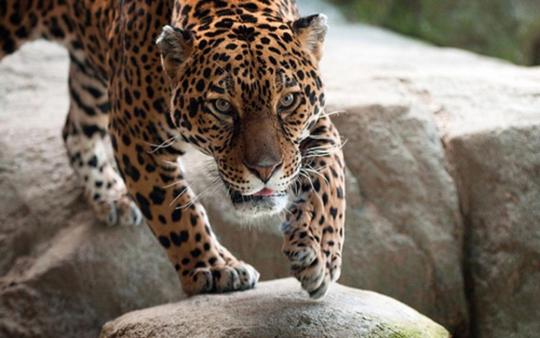
Several years back, male jaguars started moving up from Mexico, and have since been spotted roaming throughout the Southwest and the Grand Canyon. Trump’s border wall, however, threw a wrench into one of the biggest cat recoveries the New World had seen. The fact that Biden has said he’ll halt construction on the wall, however, gives Greenwald hope. “It would at least give jaguars a fighting chance.” Flickr Commons/Eric Kilby/Via Center for Biological Diversity.
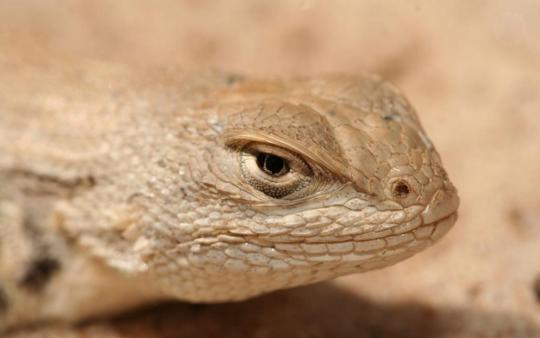
The dunes sagebrush lizard, which calls southeast New Mexico and West Texas home, is threatened by oil and gas development on the Permian Basin as well as sand mining for fracking. Greenwald says this fetching reptile is due for another decision on listing next year. USFWS/Via Center for Biological Diversity.

The Trump administration downlisted this pretty, black-and-red American burying beetle—found in South Dakota, Oklahoma, the Sandhills of Nebraska, and, oddly enough, Rhode Island’s Block Island—from endangered to threatened, based on a petition from petroleum lobbyists. Greenwald calls the decision “completely nonsensical,” as threatened status allows some states to all but exempt a species from protection, say, by legalizing gas and oil development in its habitat. Which is what happened recently in Oklahoma. “It was a total handout to oil and gas at the expense of the beetle, which is actually one of the few insects that raise its young,” says Greenwald. Fascinatingly, it does as much by finding bird carcasses, exuding a mucousy fluid from its anus to cover said carcasses and laying eggs and raising young atop them. “It provides a vulture-like service, feasting off carcasses’ nutrients,” says Greenwald, who is in talks with various advocates about action to override industry’s “special exemption” regarding these beetles. Doug Backlund/South Dakota Game, Fish, and Parks/Via Center for Biological Diversity.
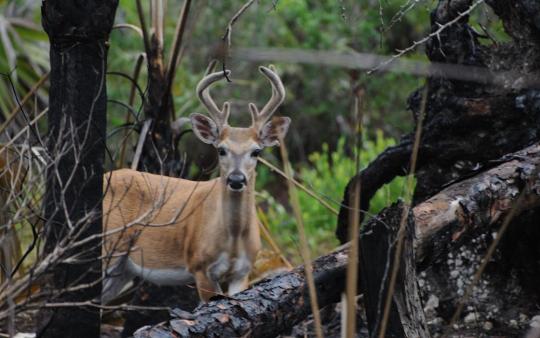
There was some movement on the part of the Trump administration to delist the Florida Key deer, but luckily, it didn’t go anywhere. “Their numbers are up, but because they live in the Florida Keys, they’re likely to be underwater in the next 50 years if we don’t do something about GHGs,” says Greenwald. “It’s our smallest deer, so we’re hopeful that we’ll see enough climate action under Biden to give it a chance to survive.” USFWS/Via Center for Biological Diversity.

Coral species including staghorn (pictured) and elkhorn also occur in the Keys and have unfortunately been delisted since the aughts. “With ocean acidification from GHGs, coral in our reefs are disappearing quickly,” cautions Greenwald. “If we don’t get them back on the list, we’ll have lost a gorgeous world.” NOAA/Via Center for Biological Diversity.
5 notes
·
View notes
Text
Arrow 8x01 Brain Dump
So that was....awesome! I’m in shock! Obviously there was a gaping chasm where our precious cupcake used to be, but that’s gonna be the new normal for this last run, so I’m gonna try to not dwell on that too much in these last few reviews. And apparently these aren’t getting any shorter, even without Felicity...
Oliver Jonas Queen: Paragon and bestest hero everrrr (suck it, Larry)
Our beautiful boy 😭😭😭 kicking the episode off with stunning recreations of the very beginnings of the show, first on Lian Yu, then returning to Moira was just *chef kiss*.

That Oliver is now able to relive these moments, really feeling the feelings and speaking the words that he was previously too broken to, upon his real return from the island, and expressing them to both himself and to those people he can no longer see in his reality, is just heart-breaking and tear-inducing and beautiful and satisfying and all of the feelings. He worked his arse of to get here and to experience it and he fucking well deserves it. Ugh I just made myself cry haha.

More under the cut...
Stephen’s acting was a beautiful thing to watch in this episode. Oliver’s scenes with all the returning guests were just so perfect; his emotions over seeing Tommy and Moira again 😭, then not-Felicity 😍💔 then Adrian 😂 were all perfect. The scene where he was trying to seek advice or validation from Moira over leaving his family for this mission (even though he couldn’t reveal why) was just heart-breaking. Then when he breaks down (along with us!) and tells Moira he’s sorry, it’s almost like he’s doubly apologising; to Moira for not better understanding her, now that he is a parent himself, and to Felicity, William and Mia, for having to leave them behind.
It was so sad seeing Oliver doubting himself throughout the episode. He tells Diggle that Earth 2 has so many more people alive without him having been there, and then when Moira astutely observes that he is a better man now than before he went on the Gambit, he replies he’s not so sure. How can he still not see this yet?? He’s clearly been away from Felicity for too long! By the end of the episode he seems to be making some headway, at least in realising that he doesn’t need to face this crisis alone, when he delivers an EPIC SPEECH to Tommy “because were only as good as the people in our lives. Every one of those losses brings with it a choice between darkness and light. Make the right choice.” YES MY BOY!!! I’m totally here for this whole season of Oliver going to other Earths, realising how awesome he is, then imparting this wisdom on everyone by delivering rousing speeches!! The Monitor said it himself in his voice-over, referring to Oliver “the highest [form of heroes] belong to those known as the paragons and they are the only hope of all creation.” YAAAASSSSS!!!! SUCK BALLS LARRY AND LARA!!!
Felicity/Olicity
Just because she’s not there, doesn’t mean she’ll be forgotten! I’m honestly so pleased that the show isn’t going to pretend Felicity doesn’t exist just because Emily left. Her absence is palpable, so the mentions and nods to her character throughout the episode (and the rest of the season, it seems) are very much welcomed!
The fake-out Felicity scene was beautifully done! From Oliver’s initially excited face and “it’s supposed to be red” 😭😭, his “good for her” when he found out that E2 Felicity is a badass mogul, to the OLICITY LOVE FERN on not-Felicity’s desk!!! Perfection!!

Source: eloquence-of-felicities
Ugh and the scene with Oliver staring lovingly at Felicity and Mia’s photo...HFDSKGHFKJGHDSFKS NOT OK!!! 😭😭😭😭

Source: olicitygifs
Diggle
The Diggle ‘reveal’ was nostalgic perfection:

My live reaction 😂😂
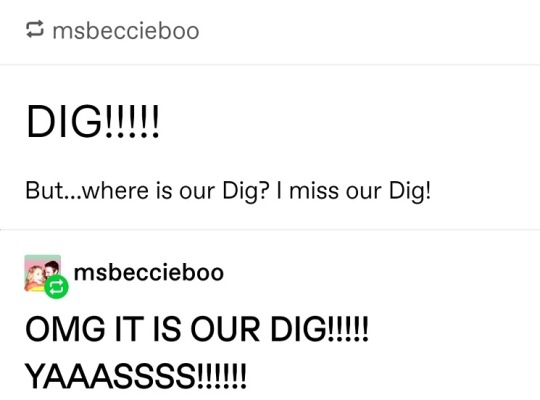
Can I just say that I loved that he’d spoken with Felicity about Oliver, and gone after him. OTA for life!! I’d hoped that that would be the case, but you never can tell with these writers in recent seasons 😬 Dig is a master at advice-giving, and getting Oliver to see the big picture. Oliver needs a friend in this endeavour, and neither Felicity nor Dig would have him doing it alone. Dig’s purpose throughout the whole episode was pretty much to tell Oliver that he’s not alone, his death is not necessarily unavoidable, that he NEEDS TO ACCEPT FRACKING HELP (”that’s the thing about being brothers; you never, ever have to ask”😭😭), and that the whole reason that E2 has gone to crap was because Oliver was not there to protect it!
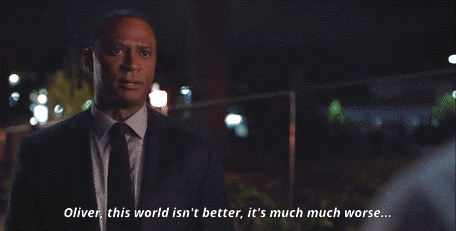
In John Thomas Diggle we stan.
FTA
Our FTA babies were back, and in the lair!! AHKASFHDSDAKF!!! I loved the power struggle, with the team trying to find the right dynamic, before finally deciding to just make the Olicity baby the leader (duh), or moreover, Mia demanding that things be done her way from now on (apples, falling, tree?).

Source: oliverxfelicity
William’s little comedic moments just popped.
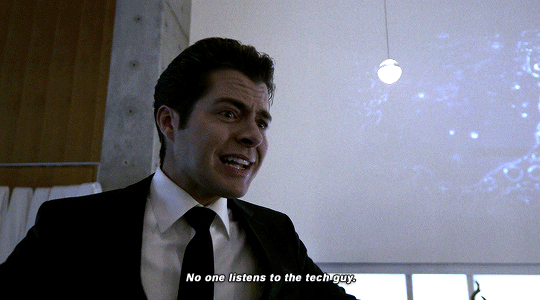
Source: olicitygifs
And then his delivery of a Felicity-worthy pep-talk to Mia had me falling infinitesimally more in love with him. This is the spin-off team we need to see!!

We finally met JJ Diggle who appears to be irredeemably (not likely) evil, and very handsome to boot, leading the Deathstroke Crew (baby Sara would have NEVER 😒😒). I was hoping for some Old Man Diggle, but alas we were not so lucky this week. Much as I actually LOVE the flash-forwards, I did feel like they were a little shoehorned in in this episode. There was so much to unpack in the present story, that I kind of just wanted that to continue?
Special Guests
From Moira’s first words I was crying.


Susanna Thompson continues to be outstanding as Moira, I love her! E2 Moira married Malcolm Merlyn, meaning we got John Barrowman back 😍😍, in a non-evil role (YAAASSSS!). Although there was no mention of Robert, given that we know on this Earth he returned from Lian Yu, and was later unmasked as the Green Arrow?? Anyway, this new Queen-Merlyn union officially made Oliver and Tommy brothers 😭😭 Oh btw.....TOOOOOMMMYYYYYYY!!!!!!!! AGSHAGFKJSAGFJKAG!!! Back, alive and kicking (literally) and gorgeous as ever. Ugh I just adore my Merlyn men 😍😍😍😍

Source: feilcityqueen
Tommy turning out to be the Dark Archer on this earth is all we had ever wanted to see!! Evil!Tommy is a thing of beautiful fanfiction dreams!! (I also lolled at the OTT, campy, cowering Malcolm, as Oliver realised it wasn’t him!) Not to mention this scene, that re-lit our Toliver flames in the most perfect way 🔥🔥

This moment was so good that I can just about forgive Oliver’s historically inaccurate non-shirtless state 😒😒 (strike 1)
In trying to track down the dwarf star shizzle at Queen-Merlyn Enterprises👀 , Oliver stumbles across the E2 GA who turns out to be ADRIAN CHASE!! YAAASSSS!!!! It was great to have him back, in the growly S1 Oliver-esque fashion! E2 GA also enjoys the salmon ladder....Stephen really played us all when he told us that we’d see the salmon ladder in episode 1 😡😡 (strike 2 Steve, you’re on your last warning!) I loved Oliver’s little inside joke with himself when he said to Adrian “maybe I’m just 10 steps ahead of you” lolololol!!
Thea OD’d on Vertigo and passed away on E2, which was sad, but meaningful, as it spear-headed Tommy’s war on The Glades, much like Rebecca’s murder did for Malcolm on Earth 1. (Psst, it’s ok though, our Speedy’s back in a few weeks).
Superfluous Cast
Rene and Dinah remain disloyal rats on this Earth, and with no Oliver to mentor them, they turn out evil as well as incompetent and we got to see them taken into custody at the end of the episode...wah-wah-wahhh!! I would definitely be happy with this nice small amount of relevance/screen time for them moving forwards, please and thank you. Let’s let our boys shine for the last few outings!
Black Siren’s presence in the episode was thankfully small, and although she was saved in the end, presumably to go on to help Oliver and Dig (she kinda owes them now), I’m hoping that we continue with this minimal exposure, because, as much as I enjoyed her last season, with no Felicity to make her likeable, I’m not feeling her. I also laughed for a disproportionately long amount of time that her ‘iconic’ Pretty Bird moment that we all heard about beforehand came from Adrian, not her ‘Ollie’ 😂😂
That ending
Following on from the press previews and interviews leading up to the episode, there were comments along the lines of Oliver suffering a devastating loss, and that the Arrowverse would never be the same etc etc, regarding the end of the episode. Well...I have to say I just wasn’t as ‘shooketh’ or as moved by the ending as the previews implied I would be 😬 I mean of course the ending was awful; a whole Earth was erased, and Oliver having to see Moira/Tommy die at the end (especially after managing to redeem Tommy) must have been devastating for him in the moment, but the thing is, I’m not all that invested in Earth 2, so the magnitude of it didn’t really affect me that much. Maybe I’m just a cold-hearted bitch my heart has simply been irrevocably broken by 7x22. Anyway, I’m sure Oliver will be back and fighting fit again next week 😂
When MG, Beth and even Stephen had been throwing around the dreaded term ‘love letter to the fans’ I was more than scared about this season 😬 but the episode really did play out that way in my eyes, something I’m hoping that they are able to continue over the few remaining episodes. So yes, I lost my shit and (begrudgingly) loved this episode 😂😂 It was easier to deal with the lack of Felicity when they had thrown the (brand new, super high-spec) kitchen sink of guest stars at the episode. So it will be interesting to see how we fare over the next few episodes, where the guest stars won’t be such scene-stealers.

Thank you to the amazing gif-makers 💗💗💗 It’s so wonderful to see beautiful new scenes again! Any uncredited gifs are mine.
#Arrow 8x01#Arrow#Oliver Queen#Olicity#John Diggle#Tommy Merlyn#Arrow Season 8#Arrow spoilers#beccie's brain
73 notes
·
View notes
Link
One of the most widespread beliefs about fossil fuels — oil, natural gas and coal — is that these substances started out as dinosaurs. There’s even an oil company, Sinclair, that uses an Apatosaurus as its icon. That dino-source story is, however, a myth. What is true: These fuels got their start long, long ago — at a time when those “terrible lizards” still walked the Earth.
Fossil fuels store energy in the bonds between the atoms that make up their molecules. Burning the fuels breaks apart those bonds. This releases the energy that originally came from the sun. Green plants had locked up that solar energy within their leaves using photosynthesis, millions of years ago. Animals ate some of those plants, moving that energy up the food web. Others plants just died and decayed.
Any of these organisms, when they die, can be turned into fossil fuels, notes Azra Tutuncu. She’s a geoscientist and petroleum engineer at the Colorado School of Mines in Golden. But it takes the right conditions, including an oxygen-free (anoxic) environment. And time. A whole lot of time.
The coal we burn today got its start some 300 million years ago. Back then, dinosaurs roamed the Earth. But they didn’t get incorporated into coal. Instead, plants in bogs and swamps died. As this greenery sunk to the bottom of those wet areas, it partially decayed and turned into peat. Those wetlands dried out. Other materials then settled down and covered the peat. With heat, pressure and time, that peat transformed into coal. To extract coal, people now have to dig deeply into the earth.
Petroleum — oil and natural gas — comes from a process that started in ancient seas. Small organisms called plankton lived, died and sank to the bottom of those oceans. As debris settled down through the water, it covered the dead plankton. Microbes dined on some of the dead. Chemical reactions further transformed these buried materials. Eventually, two substances formed: waxy kerogen and a black tar called bitumen (one of the ingredients of petroleum).
Explainer: All crude oil is not alike
The kerogen can undergo further changes. As debris buries it deeper and deeper, the chemical becomes ever hotter and subjected to more pressure. If conditions become just right, the kerogen transforms into the hydrocarbons (molecules formed from hydrogen and carbon) that we know as crude oil. If temperatures become hotter still, kerogen becomes the even smaller hydrocarbons that we know as natural gas.
The hydrocarbons in oil and gas are less dense than the rock and water in Earth’s crust. That prompts them to migrate upward, at least until they get trapped by some ground layer that they can’t move past. When that happens, they gradually build up. This forms a reservoir of them. And they will stay in it until people drill down to release them.
How much is there?
There is no way to know how much coal, oil and natural gas lie buried within the Earth. Even putting a number on that amount would not be very useful. Some of these fossil fuels simply will be in places from which people cannot safely or affordably extract them.
And even that can change over time, Tutuncu notes.
Some 20 years ago, she says, scientists knew where they could find what they call “unconventional resources.” These were accumulations of oil and gas that couldn’t be obtained through traditional drilling techniques. But then companies figured out new and less costly ways to bring up these resources.
Scientists Say: Fracking
One of these methods is hydraulic fracturing. Better known as fracking, it’s when drillers inject a mix of water, sand and chemicals deep into the ground to force out the oil and gas. In the foreseeable future, Tutuncu says, “I don’t think we will run out [of fossil fuels]. It’s just a matter of improvements in the technology [to extract them affordably].”
The burning of fossil fuels creates carbon dioxide and other greenhouse gases. These can contribute to climate change and global warming. For that reason, many scientists have warned that people should stop using fossil fuels. Alternatives, such as wind and solar power, don’t produce greenhouse gases.
Giving up fossil fuels entirely, though, won’t be easy, at least in the near future, Tutuncu says. These substances are used for more than just producing energy. Plastics and many other products include fossil fuels in their recipes. Scientists and engineers will have to come up with environmentally friendly replacements for all those products if society chooses to wean itself off of its current reliance on fossil fuels.
9 notes
·
View notes
Text
Viv

Vivienne Westwood. For my summative brief, I was given the designer Vivienne Westwood and I couldn’t have been happier. Vivienne is an icon of mine. Personally, I’m not as bad ass as her designs but the reason I love Vivienne so much is that she is so determined in what she wants and if she doesn’t like something she isn’t afraid to tell you.
Over the Christmas break I started to research into her earlier life and to see what sparked her passions and I came across a documentary made this year called ‘Westwood: Punk, Icon, Activist’ and was pleasantly shocked. The documentary dated all the way back to her 1960’s career and even made reference to her childhood. But what I found mainly interesting was that her husband, Andreas Kronthaler, runs the fashion brand as much a Vivienne herself does. Even her co-workers made referenced to the amount of power she gives to her husband over the company and even a 50/50 divide was mentioned. However, I feel this is somewhat amazing and shows how passionate Andreas feels towards Vivienne and how similar they are in terms of how well they want the company to do. Vivienne in her documentary also made reference to how quick the brand is expanding but she also mentions how she doesn’t like how big the brand has got and how she barley has any control over decisions anymore. I totally understood her frustration as she didn’t even like her designs anymore. She also realised how much fashion can damage the planet and how much plastic and waste her company was making.
Over the past years Vivienne has voiced her opinions over climate change and this is where I found my love for her and the company. I find climate change a MASSIVE concern and the current situation constantly worries me. Vivienne has repeatedly based her newest collections on climate change as she says, ‘every collection should have a meaning’. Her biggest concerns seem to be on fracking, which is a process you under go to extract oil’s and gas from the ground. However, this is very damaging to the environment as it creates greenhouse gasses, air pollution and water pollution and also increase the chances of oil spill which can also spoil soil and damage surrounding vegetation; In addition to that it also causes earthquakes. So, to sum up Vivienne has a very good reason to be protesting and really makes me admire her, not only for her strong-minded work ethic but her passion to make a change.

In her earlier career, she didn’t get so much support from the public, and at one point, she even got mocked. In her documentary, it shows Vivienne in 1988 on a TV show, called ‘Wogan with Sue Lawley’, getting laughed at. It was so uncomfortable to watch and I couldn’t believe how rude the presenter and audience where being. They weren’t only taunting Vivienne but her clothes as well and at one point Vivienne even said, ‘if they won’t stop laughing I will tell the next person not to come on’. I mean, can you imagine designing a whole collection your proud of and then people end up not taking your work seriously.
Overall, I am very grateful to be given the change to research and learn more about Vivienne herself and also her brand and how it cooperates in a day to day scenario.
1 note
·
View note
Text
All About BW Technologies by Honeywell Analytics
BW technology is a UK based company working for many years to design innovative technologies and electronic products for many purposes. It is a full-service sales representative company registered and certified world widely.
Like Honeywell Analytics, BW technologies launch valuable and brand new devices for gas detection, flames, fumes and fires. All the appliances are compact and lightweight, and easy to use without training. If you are looking for compatible, reliable, and high-efficiency working products, visit our site and order now.

Signs of Gas Leakage
The symptoms noticed in case of leakage and exposure to harmful and toxic gases are as follows:
Headache
Dizziness
Nausea
Eye and throat irritation
Fatigue
Breathing problems
Pale skin or blisters, which only occur if skin comes in contact with compressed or liquid gas
Significance of BW Technologies
There is a specific set-up of every device of Honeywell Analytics to detect certain gases. All appliances manufacture of household materials, aluminium and stainless steel. All the instruments of BW Technologies by Honeywell are lightweight and easy to adjust in any area.
BW Technologies by Honeywell supports various languages such as Chinese, French, German, Italian, Spanish and English to run and monitor multiple countries. Honeywell Analytics' portable gas detectors have storage batteries that run efficiently for 4-5 hours. You can carry the devices in your hands from one place to another.
The availability of alarms assists in covering the progress of the system. There are three types of alarms: visible, audible, vibrating, and equipped with event and data logging for comfortable and reliable usage—all instruments are designed with advanced technology, fully configurable, and easy to manage.
There is a set-up of Bluetooth in some devices to connect it through a mobile app for straightforward approach and access. The BW Technologies by Honeywell are all ideal for using confined spaces or wall leakages and spot leak testing. All the BW detectors are user-friendly and operate through just one button.
Unique Features
It is the standard system used to detect variable gases and monitor minor leakages from pervasive areas.
BW Technologies by Honeywell is a portable gas detector and monitor of compact four gases.
The BW Technologies by Honeywell has a rugged design and has 5-6 hours battery run time.
These systems have a flappable screen and icon-driven interface.
These are intuitive, easy to use and maintain, and do not require check and balance daily.
All the systems are guaranteed and imported with unique features such as waterproof and dust-tight (IP65-rated).
There is the availability of the type of alarms; these are remote and local alarms and include man down.
The BW Technologies by Honeywell is highly recommended due to its unique features and flexibility. These Rae systems can monitor up to 7 types of threats, including VOCs, combustibles, gamma radiations, toxic gases, and oxygen.
Applications
The BW Technologies by Honeywell has multiple applications and are multi-spectrum. These are used in Fracking, Hazmat Response, Exploration, Plant Shutdown & Turn-Around, Residential Calls, Leak Detection, Urban Search & Rescue, Urban Search & Rescue, Venue Protection Confined Space Entry, Emergency Response, Environmental Cleanups/ Remediation, Clandestine Labs, and Decontamination.
DSA Suppliers provide all sorts of gas detectors and detection systems. Gain valuable discounts by placing your order today.
0 notes
Link
Excerpt from this story from Sierra:
Picture the iconic image of a lighthouse, its reason for being to evoke a feeling of safekeeping, a beacon in times of potential danger. Now imagine that lighthouse is actually the smokestack of a coal-fired power plant.
This bit of cognitive dissonance exists on the New Jersey shore, having been added in 1987 to the B.L. England Generating Station situated on Great Egg Harbor and adjacent to the Great Egg Harbor Wild and Scenic River. Originally built as a diesel and coal generator in 1961, the plant has experienced several incarnations over the years. The Sierra Club has been actively fighting it since 1998 and is now celebrating its permanent closure this May, the owners having nixed plans to repower its coal units with fracked gas.
The victory is even sweeter because the plant closure renders dead on arrival a gas pipeline, proposed in 2013, that would have cut through the New Jersey Pinelands National Reserve(PNR), designated as the first national reserve in 1978 and a UNESCO Biosphere Preserve in 1988. At around 1.1 million acres, it occupies 22 percent of the land area in the most densely populated U.S. state.
One constant during this period was most New Jerseyans’ unwavering opposition to the pipeline. “Lots of people came out fighting,” says Tittel. “This is about tenacity and perseverance. Every time a roadblock came up, we kept fighting through it. The difference people made was huge—emails, meetings, petitions, protests, kayak events, Pinelands walks. The other side used every trick possible to hurt citizens’ chances to act, but the public and the environment ultimately won.”
2 notes
·
View notes
Link
Another post from me about the sage grouse and its various subspecies. This has to be the 475th post, or so. (Not really counting, but I know I post lots of stuff about these birds.)

Excerpt:
The Trump administration today proposed cutting Obama-era protections for greater sage grouse on 5 million acres of national forests and grasslands in five western states, including expanding loopholes to allow more oil and gas development in the bird’s habitat. The public has 90 days to comment on the U.S. Forest Service proposal.
“The original plans weren’t aligned with the best available science on sage-grouse habitat, and these proposed revisions stray even further from ensuring that this iconic species has what it needs to survive,” said Greta Anderson, deputy director of Western Watersheds Project. “Unfortunately, this administration doesn’t give a whit about the sage grouse and cares more about handing our public lands over to extractive industries.”
The proposed plans cover national forests in Colorado, Nevada, Idaho, Utah and Wyoming. The agency’s “preferred alternative” eliminates the strongest protections for greater sage grouse by eliminating “sagebrush focal areas.” The proposal includes removing protection for more than 400,000 acres of important habitat for greater sage grouse in Idaho and more than 100,000 acres in Wyoming.
“We’re really troubled to see the Forest Service following the Bureau of Land Management’s lead and making it easier to drill, frack and mine on public land,” said Michael Saul, a senior attorney with the Center for Biological Diversity. “Everything about the Forest Service’s proposed plan makes it easier to destroy habitat and harder for the sage grouse to survive.”
The Forest Service’s proposal would also lift protections that would have prevented new surface-disturbing oil and gas operations on the highest-priority sagebrush habitats. The plans greatly expand loopholes for allowing surface-disturbing oil and gas development on all Forest Service sage grouse habitats by increasing opportunities for industry to seek waivers and exemptions from existing restrictions. Exceptions would now be granted by a sole authorized officer rather than requiring unanimous concurrence from a team of experts, and without a prior requirement that exceptions result in a “net conservation gain.”
7 notes
·
View notes
Text
Wuhan Coronavirus, Iran Cover-Up, Kobe Bryant: Your Monday Briefing
(Want to get this briefing by email? Here’s the sign-up.)
Good morning.
We’re covering a new stage in the spread of the Wuhan coronavirus, developments in the impeachment trial and the death of the basketball legend Kobe Bryant.
Coronavirus cases grow while answers remain elusive
The outbreak that has spread to several continents has killed at least 56 and sickened more than 2,000. And Wuhan, the virus’s epicenter, may have about 1,000 more confirmed cases of the mysterious illness, the city’s mayor said. Here’s the latest.
The head of China’s National Health Commission said that people carrying the virus but not showing symptoms could still infect others and warned that the “epidemic is now entering a more serious and complex period.”
Measures taken: Hong Kong barred residents from the center of the outbreak and closed major tourist attractions. China banned the wildlife trade nationwide, deployed hundreds of medical workers and assigned dozens of hospitals to focus on treating the virus alone.
Scope: Cases have been confirmed in Thailand, Vietnam, Singapore, Japan, South Korea, Nepal, Taiwan, Hong Kong, Malaysia, France, Australia and the U.S.
Perspective from Beijing: The Chinese government has stepped up its response to the Wuhan crisis, but the effort has been plagued by bureaucracy and a lack of transparency.
How Iran covered up the downing of an airliner
For three days, Iranian military officials knew they had shot down a Ukrainian jetliner while the government issued false statements, denying any responsibility.
When they finally told President Hassan Rouhani, he told them to come clean or he would resign. Only then did Iran’s supreme leader, Ayatollah Ali Khamenei, step in and order the government to acknowledge its fatal mistake.
The Times pieced together a chronology of those three days by interviewing Iranian officials, members of the Islamic Revolutionary Guards Corps and people close to the supreme leader’s inner circle and by examining official public statements and state media reports.
Takeaway: There was a behind-the-scenes debate over covering up Iran’s responsibility for the crash, as the Revolutionary Guards effectively sidelined the elected government.
Perspective: Since August, at least 16 Iranian students have been turned away at airports, losing their chances to study at prestigious universities. They told us their stories.
Impeachment trial switches to White House perspective
In a Saturday session, President Trump’s legal team began its aggressive defense in the Senate impeachment trial.
They dismissed the House impeachment inquiry as a partisan ploy that ignored the facts to cast Mr. Trump’s actions in the worst possible light. Democrats, they argued, were “asking you to tear up all of the ballots” by convicting Mr. Trump of high crimes and misdemeanors.
The president’s legal team used only two of the 24 hours allotted to them to present their defense. Arguments will resume Monday afternoon.
Another angle: New evidence became public this weekend: a 2018 recording of Mr. Trump ordering the firing of the U.S. ambassador to Ukraine.
Kobe Bryant dies
The basketball legend, 41, died in a helicopter crash in Calabasas, Calif., on Sunday. He was among five people traveling in the helicopter.
The National Basketball Association sent a confirmation of Bryant’s and his daughter Gianna’s, 13, deaths to all teams and league employees Sunday afternoon, according to two people familiar with the document.
The 18-time All-Star and five-time champion retired in 2016, having won Olympic gold medals as a member of Team U.S.A. He was scheduled to headline the 2020 N.B.A. Hall of Fame nominees.
Legacy: The crash came a day after the former Los Angeles Lakers superstar congratulated LeBron James, currently on the team, for moving past him on the N.B.A.’s career scoring list.
“Continuing to move the game forward @KingJames. Much respect my brother

#33644,” Bryant tweeted.
Fans: People were already gathering to pay their respects near the site of the crash. “He’s a figure. He’s a legend. He brought L.A. back. He’s an L.A. icon. He was a competitor. His drive, shooting in the gym at 4 in the morning. He’s what everyone wants to be,” one man said.
If you have 10 minutes, this is worth it
Snapshot: Above, Novak Djokovic, who beat Diego Schwartzman this weekend. In a rare interview, the reigning champion said he was no longer playing tennis to prove himself but rather to improve himself and the lives of those around him.
What we’re reading: This Boston Globe investigation of the government’s inaction on E. coli outbreaks. The story of a 2-year-old boy who ate some of his father’s salad and developed the illness is “heartbreaking, terrifying and riveting,” writes our Times Insider editor, Jennifer Krauss.
Now, a break from the news
Cook: Slow cooker red beans and rice takes only about 20 minutes to set up in the morning.
Watch: This trailer of “Miss Americana,” a Netflix documentary about Taylor Swift.
Read: In her latest comic book endeavor, Roxane Gay adapts a short story, “The Sacrifice of Darkness,” from her 2017 collection “Difficult Women.”
Smarter Living: Wirecutter recommends five cheap(ish) things to radically make over your cluttered closet.
And now for the Back Story on …
Bill Clinton’s impeachment
We asked Peter Baker, our chief White House correspondent, to reflect on a major moment in the lead-up to the last presidential impeachment and compare it to the current trial. He has covered both.
Twenty-two years ago this week came a milestone moment in the last presidential impeachment drama. President Bill Clinton was on the defensive after The Washington Post, where I was working then, broke the news that Ken Starr was investigating whether he committed perjury to cover up an affair with a onetime White House intern.
Mr. Clinton took to the microphone at the end of an event, glared angrily at the reporters in the room, wagged his finger and, with Hillary Clinton standing behind him, forcefully said, “I did not have sexual relations with that woman, Miss Lewinsky.”
We were struck by two things: One, that he seemed to briefly blank on her name, referring to her as “that woman,” before summoning it. But the second was the intensity of his denial. He was white-hot mad. At that time, before the DNA and the grand jury testimony, we didn’t know if the story we were pursuing was bogus or if the president of the United States was lying to us and to the country. Of course, later we found out which it was.
Now, as Ken Starr re-emerges as a lawyer for President Trump in the current impeachment trial and the administration’s explanations of what happened continue to fluctuate, it’s hard not to feel déjà vu.
That’s it for this briefing. See you next time.
— Melina
Thank you To Mark Josephson and Eleanor Stanford for the break from the news. You can reach the team at [email protected].
P.S. • We’re listening to “The Daily.” Our latest episode is about how the issue of fracking natural gas could win the swing state of Pennsylvania in the 2020 election. • Here’s our Mini Crossword, and a clue: Reads but doesn’t comment, in internet lingo (five letters). You can find all our puzzles here. • Monica Mark is our next Johannesburg bureau chief. She has covered some of the biggest stories in Africa for Bloomberg News, The Guardian and BuzzFeed News.
from WordPress https://mastcomm.com/event/wuhan-coronavirus-iran-cover-up-kobe-bryant-your-monday-briefing/
0 notes
Link
An Inuk journalist's now-iconic photograph of a Mi'kmaq woman praying during the 2013 fight against fracking in New Brunswick is part of a national exhibit at the Canadian Museum for Human Rights in Winnipeg.
The photo, taken by Inuk journalist Ossie Michelin, is of Amanda Polchies kneeling in front of a line of police while holding an eagle feather. Polchies was one of dozens of people from the Elsipogtog First Nation and across the Atlantic who took part in demonstrations that year, which Michelin covered as a reporter for APTN National News.
N.B. fracking protests and the fight for Aboriginal rights
N.B. shale gas solidarity protests spread to other regions
Titled Mi'kmaq Woman, 2013, it was named best photograph in the museum's Points of View: A National Human Rights Photography Exhibition, made up of 70 photographs.
"It's pretty indisputable that what Indigenous people are fighting for are their basic human rights," Michelin said.
"So now that the Canadian Museum for Human Rights recognizes it, it's time for the federal government, provincial governments, territorial governments and industry to recognize this as well."
Continue Reading.
#mi'kmaq#First nations#Human Rights#New Brunswick#Indigenous#Canada#cdnpoli#canadian politics#canadian#canadian news#Inuk#Inuit#Ossie Michelin#journalism#photography#indigenous resistance
218 notes
·
View notes
Text
Gord Hill, Indigenous Artist and Anarchist: An Interview
Gord Hill is an anarchist artist and a member of the Kwakwaka’wakw nation who has been active in anticolonial and anticapitalist struggles for decades. Over the years, his art and criticism have been an inspiration and challenge to us. Gord is the author of two comic books, The 500 Years of Resistance Comic Book, The Anti-Capitalist Resistance Comic Book, as well as 500 Years of Indigenous Resistance, and runs the website Warrior Publications. He also draws and writes under the pseudonym Zig Zag.
Obviously, there have always been intersections between art and resistance, but we’d like to hear how you see those intersections for yourself, and how you see those intersections playing out in society today.
I believe art is an important part of resistance in that it contributes to an overall culture of resistance. Art inspires, educates, motivates, and helps to maintain a history of resistance as well. Today art is perhaps even more prolific in social movements due to greater access to communications technology with new forms such as memes and gifs emerging, although I find these to be more transient than traditional forms such as posters, banners, t-shirts, etc. My main focus is on graphic arts but it’s important to acknowledge the power of other media such as writing, music, etc., all of which contribute to building and maintaining a culture of resistance.

Are the aesthetic choices you make in your art political in and of themselves?
In some cases yes, because I consciously use images that I hope are empowering or inspiring. I also frequently use what I would consider iconic images from a particular action or event, images that people might already be familiar with and which help add authenticity to my artwork. Or slogans on banners that help convey a message, especially with comics in which I have very limited space for text. I will also consciously use images to “normalize” militant actions, like including masked persons in an image of a rally or protest, for example.

Can you talk about other artists and traditions that you draw political and aesthetic inspiration from?
Sure… some artists that have inspired me include Louis Karoniaktajeh Hall (the Mohawk artist that designed the warrior flag and wrote The Warrior’s Handbook), Art Wilson (a Gitxsan artist who used traditional Northwest Coast art to address contemporary struggles in his book of published prints entitled Heartbeat of the Earth: A First Nations Artist Records Injustice and Resistance), Joe Sacco (who did the Palestine comics), as well as more traditional Native artists including Tony Hunt (Kwakwaka’wakw) and Mark Henderson (Kwakwaka’wakw). Old school comic artists that inspired me include Jack Kirby, Alex Toth, Berni Wrightson, Alex Nino, and Frank Frazetta.

Being an artist and historian, can you talk about the differences between written history and oral tradition, and how the use of imagery might interact with these methods?
Written history is useful for historians as it provides dates, names and locations, which help in understanding history chronologically. From this chronology we can see, for example, the process of colonization, or the expansion of an empire, etc. European states didn’t appear out of nowhere but were the result of a long history of colonization by the Romans and centuries of warfare between feudal kingdoms that emerged after the collapse of the Roman empire. This history, much of it recorded by observers at the time, helps us understand how the world we live in today was created. The oral history of Indigenous peoples has been portrayed as mythologies or fantasy, but we know today that events that are told as oral history are actually real events that occurred. For example, there are widespread oral histories of an earthquake and tsunami dating from the 1700s along the Northwest Coast that scientists now know actually occurred and which caused considerable destruction to many villages. The oral history of this event portrays it as resulting from the actions of spiritual forces; until scientists linked the stories to actual events, they were generally dismissed as mythology.
In regards to oral history, Indigenous people had many ways of portraying these histories through graphic arts, such as pictographs, paintings, beadwork, and carvings. Songs and dances were another way that these oral histories were remembered.
Today, there are examples of oral history that continue to be used, including poetry and hip hop. Even videos with interviews and testimonials are examples of oral history.
I find that comics are a good “middle ground” in that they combine written history with graphic images.

Where do you see the intersections between indigenous struggles and anarchist struggles?
I would say they meet in opposition to the state and capital, which for Indigenous peoples would be seen as anti-colonial and anti-capitalist resistance, although the concept of anti-capitalist is perhaps weaker than that of anti-colonial… I think that’s probably the strongest intersection, but there are also concepts such as anti-authoritarian or egalitarian forms of organizing. Although this differs in degrees from one Indigenous nation to another, it is, overall, a fairly strong part of our traditional culture (with some exceptions).

How do you think non-indigenous anarchists can be informed by and supportive of indigenous struggles?
By knowing the history of European colonialism and incorporating this into their analysis and actions.

Which past movements have you learned the most from?
I would say definitely the ‘68 generation: the American Indian Movement/Red Power movements, the Black Panthers, as well as the 1950s-60s black civil rights struggles, the Zapatistas. I’ve also been inspired by and learned from the autonomist movements in Europe, particularly in Italy and West Germany.
Have you ever felt torn between your role as an artist and your responsibility to other forms of political resistance? If so, how have you resolved those dilemmas?
No, I’ve never felt torn between being an artist and other forms of political resistance… It’s all part of a diversity of tactics and I believe that propaganda is a vital part of resistance movements and in building cultures of resistance. I do, however, believe it’s important for people that do art, or writing or any other form of propaganda to be involved in the movement because otherwise they can be out of touch with events and current trends.

You’ve talked a lot over the years about tactics in struggles. Do you find these conversations to be similar in indigenous contexts and non-indigenous struggles? Have you seen changes in these discussions over the years?
In some ways, the discussion of tactics is similar. For example, in some cases in the Indigenous movements, there is a discussion about the wearing of masks and the carrying out of illegal direct actions; there are debates around militancy, the logistics of blockades or occupations, security and counter-surveillance. I don’t think these discussions have changed over the years, since, say, the 1990 Oka Crisis, but instead they kind of emerge and then subside depending on the types of mobilizations that are occurring. One change has been discussions around internet security and the use of social media such as Facebook, which is being used quite a bit more recently by police for investigations and pressing charges.

The struggle against the Dakota Access Pipeline at Standing Rock is arguably the most prominent struggle for indigenous sovereignty we’ve seen in recent times. Do you think there are important philosophical or tactical lessons to be taken from how this struggle has played out?
Yes, I would say the NoDAPL campaign was very important for a variety of reasons. While there have been a number of anti-pipeline campaigns in Canada, and in particular in BC, it was the first real struggle against a proposed pipeline to occur as construction began. In Canada, the proposed Enbridge Northern Gateway pipeline was eventually abandoned after several years of Indigenous resistance. At the Unis’tot’en camp, it doesn’t appear that the proposed natural gas pipeline has attempted to build on Unis’tot’en land. So the NoDAPL campaign was the first one to actively resist construction of a pipeline.
I think especially for Natives in the US, the NoDAPL campaign was very important, and I’m sure thousands of Native youth were radicalized in some way by participating in it.
Ultimately, however, the NoDAPL campaign failed. I would suggest this occurred for a number of reasons, the primary one being that the opposition, despite some militant actions that occurred, was primarily based on “non-violent civil disobedience” and pacifist methods. Any attempts at creating a diversity of tactics were largely squashed by the NGO-type organizers that dominated the debates on tactics, combined with the lack of experience among members of the Standing Rock reservation.
In contrast, I like to point out the resistance carried out by the Mi’kmaq in New Brunswick in 2013 against exploratory work for fracking operations. They didn’t have thousands of people gather, didn’t have big name celebrities join in, and didn’t have tens of thousands of dollars at their disposal. They mobilized their community and after a brief attempt at non-violent civil disobedience, they carried out more militant actions including sabotage and road blockades. Their main blockade was cleared out by police in October 2013, which resulted in six police cars being torched; afterwards, they used more mobile tire fire blockades to disrupt the exploratory work. Eventually, the company, SWN Resources, pulled out before completing all their work, and the next year a provincial election was held that saw the pro-fracking government thrown out of power in what was seen as a plebiscite on fracking. The new government enacted a moratorium on fracking. The Mi’kmaq, even though they were much smaller in numbers than what we saw at Standing Rock, and with far less resources, were victorious.
In looking at the two campaigns, there are many lessons to be learned, and I would caution against people hoping to replicate the Standing Rock model because, ultimately, it was defeated.
Further Reading
Warrior Publications
Our Coverage of the Eviction of Standing Rock
9 notes
·
View notes
Text
Jay Inslee Declares War On Fossil Fuels With Plan To Make Industry Pay For Climate Change
Democratic presidential candidate Jay Inslee already laid out plans to shut down all coal plants by 2030, spur a clean-energy construction boom and target climate change deniers overseas with anti-corruption laws.
Now the Washington governor, whose White House bid is entirely centered on climate change, is out with a new proposal to end federal support for fossil fuel production and make the industry pay for some of the damages emissions are causing.
At a time when President Donald Trump’s Energy Department extolls the virtues of “freedom gas” in official press releases, Inslee’s nearly 11,000-word “Freedom from Fossil Fuels” plan imagines what federal policy might look like under an administration that takes seriously scientists’ projections of warming over the next few decades.
The proposal calls for eliminating nearly $20 billion in coal, gas and oil subsidies, tax breaks and royalty exemptions, and halt leasing of federal lands to drillers. It promises to work toward a nationwide ban on hydraulic fracturing, or fracking, the technology that helped the United States surpass Saudi Arabia and Russia as the world’s top producer of crude. It vows an end to oil exports, and outlines a “climate test” for all infrastructure permitting, which would essentially put a stop to most new pipelines, refineries and fuel terminals.
“When you’re in a hole, you have to stop digging,” Inslee told HuffPost by phone Sunday. “We have to stare the fossil fuel industry in the eye and say, ‘The gravy train is over.’”
But the plan goes further than simply deflating the value of fossil fuels by reversing favorable federal regulations. Inslee pledged to wield his pulpit as the Democratic Party’s de facto leader to enact a fee on companies’ greenhouse gas emissions and establish a new office in the Department of Justice to prosecute polluters “to the fullest extent of civil and criminal law.”
“This will get us off fossil fuels in the only time period that’s consistent with our survival in the world as we know it,” Inslee said. “Don’t expect these people to go easily.”

Icon Sportswire via Getty Images
Past U.S. presidents are held up at a rally in Portland in support of a Supreme Court case in which young people are suing the federal government for failing to protect their right to a safe climate.
Inslee should know. He thrice tried to put a price on planet-warming emissions, the climate policy conservative free marketeers favor, in his home state. But the oil and gas industry mobilized against it, spending a record $31 million last year to kill a ballot measure that would have put a modest $15 per metric ton fee on carbon emissions.
The plan announced Monday doesn’t specify a per tonnage price, which Inslee said he’d aim to work out with legislators. But the fee would be open to changes every six months, and cover a wide array of greenhouse gases beyond carbon dioxide, such as methane and fluorinated “super pollutant” gases.
Inslee offered only vague details about the structure of the fee, calling for it to be “set as far upstream as possible to provide stable and predictable incentives for clean energy production.” The proposal suggests there could be alternative compliance payment systems set up to “ensure that compliance costs remain practical, economic and effective.”
When Democrats last tried to legislate on climate change nationally a decade ago, lawmakers proposed a cap-and-trade scheme, known as the Waxman-Markey bill, that would have set a limit on overall emissions and created a market where companies could buy and sell permits to pollute. Now that climate change, made tangible by worsening natural disasters and mounting scientific warnings, can no longer be straight-facedly denied, oil companies that once funded misinformation campaigns about the science are rallying behind a proposal to set a national carbon tax.
But tax tweaks alone are a political gambit, as the ongoing yellow-vest protests in France, started in opposition to a new levy on gas, make clear. To Inslee, a pollution price isn’t meant to raise the revenue needed to transition to renewable energy, though the proposal accounts for how it’ll help. Nor is the fee meant to simply send a signal that encourages the market to correct for the civilizational threat fossil fuel emissions pose. Pricing pollution from entire sectors is meant to limit the power of corporate giants to skirt or weaken regulations meant to phase them out.
“The dialogue has been so centered on a price that it’s unfortunately ignored the effectiveness of other regulatory measures,” Inslee said.
That’s why his campaign rolled out broad regulatory frameworks first, he said. “That’s where you get the biggest bang for your buck.”
Don’t expect these people to go easily. Washington Gov. Jay Inslee
The Exxon Mobil Corp.-endorsed carbon pricing scheme proposed by the Climate Leadership Council that’s gaining popularity among Republicans seeking a climate plan to back as science denial becomes politically untenable offers a powerful contrast to Inslee’s vision. Unlike the CLC proposal, which promises to waive oil companies’ legal liability for climate destruction, Inslee vowed federal support to the lawsuits a handful of states, municipalities and individual citizens filed to recoup damages from emissions-fueled warming. Going further, Inslee promised that, as president, he’d order the Justice Department to create a new Office of Environmental Justice “to hold offenders fully accountable under maximum application of federal law.”
“We’ve got to have a cop on the beat,” Inslee said. “We can’t allow the fossil fuel industry to just lawyer up and avoid enforcement of these laws.”
The proposal is unlikely to win Inslee many skeptical primary voters in fossil fuel-producing states. But its release comes just days after a new poll found a majority of Americans believe fossil fuel companies are responsible for damages linked to climate change. Just 29% said companies bear little to no responsibility, while 57% said the industry owes a “great deal” or “moderate amount” for climate change destruction, according to the online survey of 5,131 adults conducted by the Yale Program on Climate Change Communication and commissioned by the nonprofit Union of Concerned Scientists.
Another 53% said fossil fuel companies should pay for climate damages, including 25% who said the industry should cover “all costs” and 29% who said “most costs.” Just 4% said taxpayers should cover most costs, 2% said all costs and 12% suggested the expense should be equal split between public and industry money.
Inslee’s expanding library of climate proposals makes little mention of carbon capture and storage, technologies largely funded by fossil fuel companies. But the governor said his plan doesn’t “eliminate that as a possibility,” particularly for hard-to-decarbonize industries like steelmaking and cement production. But he pointed to the repeated failures of carbon capture-equipped power plants as evidence that such technology ought not to be used as an alternative to carbon-free alternatives in the power and transportation sectors.
“We just can’t allow it to be a false hope of people who want to hang on to an industry that is going to be transitioned out of under any circumstances,” Inslee said.
REAL LIFE. REAL NEWS. REAL VOICES.
Help us tell more of the stories that matter from voices that too often remain unheard.
The post Jay Inslee Declares War On Fossil Fuels With Plan To Make Industry Pay For Climate Change appeared first on Gyrlversion.
from WordPress http://www.gyrlversion.net/jay-inslee-declares-war-on-fossil-fuels-with-plan-to-make-industry-pay-for-climate-change/
0 notes
Text
Midnight Meming #4: FrackFeed.com
Midnight Meming #4: Frackfeed.com
In chapter 8, Shifman describes one function of political memes as a form of culture jamming in the modern age. While she primarily uses the example of punching up, that is to say a less powerful group attacking a more powerful, it is unavoidable that culture jamming works both ways with its helpful friend misinformation. We live in a dystopian hellscape where truth is becoming more subjective as more and more corporate and government misinformation is being produced. For an example let's look at fracking.

Hydraulic fracturing - known more commonly as fracking - is a process where bedrock is cracked by injecting fluid (usually water mixed with granular material such as sand) through a wellbore (a deep hole not dissimilar to a well, as one would expect). This results in veins of both oil and natural gas that can then be tapped for collection. Although creating oil and gas wells are the main industrial use of fracking, the process can also be used for other applications such as waste disposal, stress measuring, and drinking water yield amplification. Fracking was first implemented in the US in the late 1940s and has since spread to the many corners of the globe.
This is not to say fracking has spread without controversy. Opponents are concerned with both the health risk and environmental impact of fracking, especially as it relates to small towns. Various papers across the world throughout the 2010s have had mixed conclusions, but in general advise caution concerning fracking for the possibility of groundwater contamination, worker health deterioration, and greenhouse gas emission. Fracking also uses a significant amount of water in its operation, an amount between 1 and 3 million gallons per well, less than half of which is recovered for later use. In addition, reports on the link between fracking and increased seismic activity have found some cause to the notion that the the former causes the latter, albeit in a less dramatized way than protest traditionally displays.

On the defense comes organizations such as Frackfeed.com. The argument for fracking is usually in two parts. Firstly, they emphasize the use of natural gas and oil in the every day as defense enough of the process, as demonstrated in the meme above (co-opting the Confused Mr. Krabs meme). Secondly, they emphasize the fact that fracking is an avenue for job growth, as demonstrated in the meme below (using the cultural icon of the Game of Thrones series).

Although not an argument, it's also a common thread to demean anti-fracking protesters (known as fracktivists).

Altogether, these memes are strong in fallacious reasoning. Note how none of the memes purport any kind of statistics or sound example supporting their claims, but rather let their claims stand alone as indisputable facts. Ad hominem (attacking the arguer), appeal to novelty (things that are newer are better), and broad generalizations are core tools of this kind of culture jamming. By co-opting memetic structures, they increase the virility of this misinformation, making it easier to disrupt the conversation. On first glance these sorts of memes can appear genuine, but giving anything more than a passing glance will find you back at Frackfeed.com. The attempt to appear grassroots while being corporate is not just shameful but depressingly common.
And the worst part is that the onus is now on the denizens of the internet to refuse to let these memes spread. However, despite being manufactured, they will still resonate with a certain subset who are willing to be a vocal minority if it means jamming the conversation. Memes are powerful tools, and while fracking is hardly the most rampant abuser of this tool, using it as a blueprint can help us be more aware of harmful culture jamming from more *ahem* powerful sources.
Christ this was depressing, here, have a video:
youtube
0 notes
Link
Morning Update 9/13/19 Move The Pipeline - Save the Water Michael King, of The Austin Chronicle, writes about the PHP and the City of Austin’s resolution against it. As reported: The resolution against the Hill Country oil and gas pipeline passed unanimously. It provides a litany of reasons to oppose the PHP, a 42-inch line that will cross the Texas Hill Country and the Edwards and Trinity aquifers. It cites the potential risk of excavation through the karst limestone of the aquifers . . . and worst-case scenarios of hydrocarbons leaking or spilling into "a major source of drinking water for two million people." Beyond those immediate threats, the resolution notes, lie the prospect of 2.1 billion cubic feet per day of new carbon emissions: "a quantity of hydrocarbons for export that, when burned, will produce more carbon pollution than the entire Austin area, which will contribute to climate change with all its deleterious effects on the people of Austin and the world." Remember Kinder Morgan’s head honcho Rich Kinder? He gave millions to protect water in his hometown of Houston and was quick to point out that aside from the cash he gave, his donation created $70 million more in environmental, physical, and mental health benefits for the Houstonians who’d benefit from his environmental philanthropy. His wife Nancy spoke about “improving the quality of life” for those folks who’d enjoy the green spaces and park system. How utterly hypocritical. Kinder Morgan’s Hill Country Permian Highway Pipeline will cut through some of the most beautiful and iconic swaths of the Texas Hill Country. It will transport 2.1 billion cubic feet of fracked gas every day, and they’ll reserve the right to move crude oil, petroleum or other dirty hydrocarbons whenever Kinder Morgan’s shareholders deem that more profitable. The PHP will include placement of tanks every few miles along the route to siphon condensate. In the event that one of those tanks gets clogged or has another incidents, toxic liquids and residue risk irreversibly pollution the watersheds, aquifers, rivers and park systems that Central Texas is known for. It threatens the drinking water for millions of Texans, leaving them without other options. It sets a dangerous precedent and threatents the Hill Country’s vulnerable karst aquifers. The PHP won’t be the only oil and gas mega-pipeline that KM brings to the Hill Country. Chances are good it will be the first of many, creating a high-traffic, highly polluted corridor that threatens Hill Country aquifers, watersheds, rivers and park systems. We’ve asked before and ask again: Why would Rich Kinder pour millions into the Houston Bayou Greenways but threaten the Hill Country? The answer is obvious. Greed and hypocrisy. #MoveThePipelineSaveTheWater ————————— A lot of you have asked us to include Kinder Morgan's contact info on every email Rich Kinder - Chairman - [email protected] Anthony Ashley - Investor Relations - [email protected] Allen Fore - Public Affairs - [email protected]
0 notes